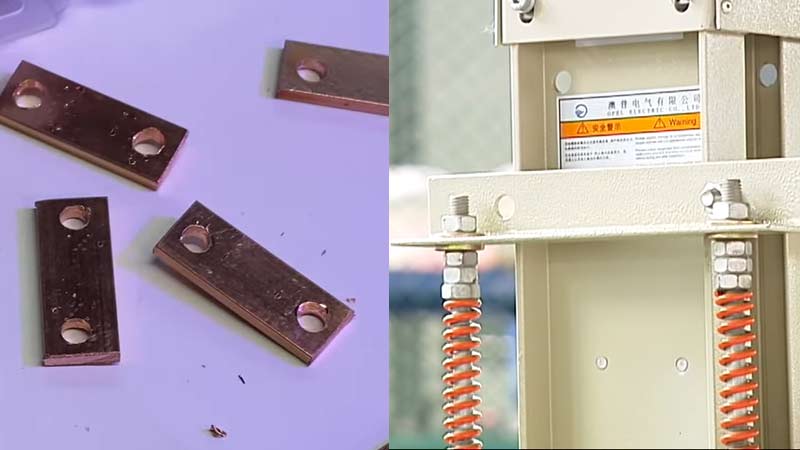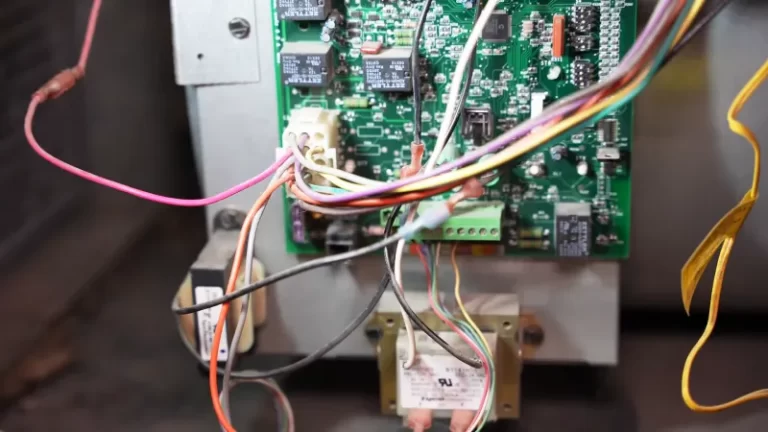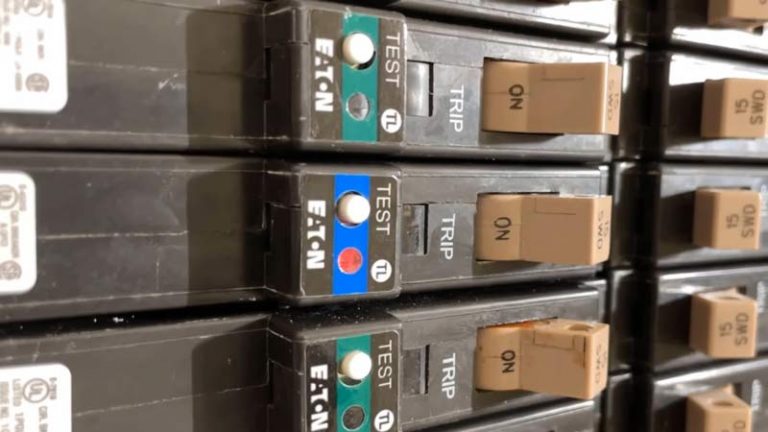What Is The Difference Between Bus Duct And Busbar
A busbar can supply power to a load and protect busbars from damage. Bus ducts are used to keep cables organized and away from people. This prevents injuries or accidents.
They help reduce the time it takes for workers to reach areas needing repairs or installation work. This saves time in the long run. The right busbar and duct system will ensure your facility runs smoothly. It also minimizes potential problems down the road.
You'll Learn About
What Is The Difference Between Bus Duct And Busbar?
A busbar can supply power to a load. A bus duct protects busbars from damage. Busbars are often located close together in electrical circuits. They need to be protected from each other’s faults.
When installing or repairing electrical wiring, use the correct tools for the job. Bus ducts come in different shapes and sizes. Choose the one that best protects your equipment.

A Busbar Can Supply Power To A Load
A busbar is a metal or plastic device that attaches to the side of an electrical panel. It provides power to a load. Choose the right busbar for your application. They come in different sizes and shapes.
You can use a busbar to supply power to lights, fans, and other small appliances. Know how to install it before using it. If you need help, guides are available online. Busbars require regular maintenance to prevent corrosion. Keeping them clean is essential for their performance.
A Busduct Protects Busbars From Damage
A bus duct is a metal duct that protects buses from damage and contact. It’s typically installed in high-traffic areas.
Let’s have a look at the differences:
| Bus Duct | Bus Bar |
|---|---|
| Steel metal duct or cast resin insulated | Metallic strip or bar |
| Alternative means of conducting electricity | Local high current power distribution |
| Thicker, cold-formed steel side rails | Supported on insulators, or wrapped in insulation |
| Plug-in bus duct systems connected to it | Connected to high power line |
| It May have many shapes | Commonly rectangular in shape |
Is bus bar and bus duct same?
The bus bar is a metal or plastic piece that connects the engine to the transmission. The bus duct is a pipe that goes from the bus bar to the engine.
It helps transfer heat and air from the engine to the transmission. It also carries oil and other fluids between these two parts of your car. A busbar is a long, bar-like device used to provide a path for electrical current.
Busbars are typically made out of metal. They are supported on insulators or wrapped in insulation. They serve as the main connection point between different circuits within an electric system.
The purpose of a busbar is to provide a path for electrical current. This allows new circuits to branch off from existing ones. It also makes it possible to run more electrical wires without causing damage or interference.
Busbars can be supported on insulators or wrapped in insulation. This depends on their intended use. For example, busbars used in power systems may need support. They are subject to high stress and strain due to constant electricity flow.
What does a bus duct do?
A bus duct is used to conduct electricity. It can be found in many applications, from homes to businesses. Bus ducts are structurally sound. They can hold up under a lot of wear and tear.
They come in different materials, such as aluminum or copper. They contain busbars for grounding purposes. Bus ducts are typically ground-mounted within a metal enclosure. This makes them resistant to weathering or corrosion.
Most bus ducts have an expiration date. They do not need regular maintenance. Just check their condition periodically.
What is the difference between cable bus and bus duct?
Cable buses and bus ducts are two different types of air conditioning systems. Cable buses use cables to move air around. Bus ducts use tubes to distribute air.
The main difference is that cable buses are more efficient than bus ducts. A cable bus is a more reliable option for indoor and outdoor installations.
Bus duct is less flexible. It can be difficult to work with in tight spaces. The cable tray requires more maintenance than the bus duct system. It must be cleaned regularly to function properly.
Cable trays are less versatile than bus duct systems. They only allow for one direction of movement – up or down. This makes them unsuitable for applications needing flexibility. For example, inside walls or around corners.
Cable buses are usually more expensive than bus duct systems. However, this isn’t always the case. Depending on your needs, a cable system may be cheaper overall.
When choosing between a cable bus and a bus duct system, think about how you’ll use the installation. For example, will it be indoors or outdoors? A cable bus generally offers better performance in either scenario. This is due to its reliability and flexibility advantages.
Where is busbar used?
A busbar is an electrical outlet or junction box. It’s usually found near the main panel in your car. It helps connect multiple circuits together.
When something goes wrong with one of these connections, the busbar can short out the entire circuit. This can cause the car to start smoking or give other problems.
It’s Used To Connect High Voltage Equipment
Busbars are used to connect high voltage equipment. This is important for preventing electrocution. Busbars also protect equipment from overload. They create a path for current flow. They can be found in electrical switchyards.
It Prevents Electrocution
One benefit of using busbars is that they prevent electric shock incidents. When properly installed and maintained, they reduce the risk of serious injury or death. They prevent dangerous voltages from reaching your equipment.
It Protects Equipment From Overload
A failure in any part of an electrical system can lead to an overload condition. This can damage equipment and potentially injure people nearby. By installing bus bars throughout your facility, you protect employees and their tools.
It Creates A Path For Current Flow. Busbar installation helps direct currents more efficiently. They don’t have to travel through obstacles like cables or tubing unnecessarily. This results in decreased power loss and increased efficiency.
Why bus duct is used instead of cable?
Bus duct is a less space-consuming alternative to cable in electrical installations. It uses fewer conductors and has a compact design. This reduces the number of cable crossings.
The busbar also has a reduced bend radius. This means there are fewer places for voltage fluctuations to occur. Interference can be minimized.
Another benefit of using a bus duct is conductor isolation. This ensures each circuit operates smoothly without unwanted noise or interference.
What is the difference between busbar and cable?
There is a big difference between busbar and cable. Busbar is more traditional and used in older electrical systems. Cable is newer and uses smaller, thinner wires.
Cables can move more quickly through conduits. This makes them better for high-speed applications.
What is the difference between busbar and cable?
Busbars and cables are two different types of electrical wiring assemblies. Busbars protect electric motors or devices from voltage overloads. Cables provide power to devices.
Types of busbars and cables – why use them?
There are a few reasons to use a busbar or cable assembly. They protect equipment from voltage overloads. They transfer power between devices. They are part of safety systems.
How to wire a busbar or cable assembly – tips for safe work.
When wiring a busbar or cable assembly, take precautions against potential hazards. Always use properly rated wires. Make sure connectors fit properly. Don’t force them on. Be aware of what could happen if something goes wrong in the circuit. Elderly people should never try this at home.
Finally, always wear gloves when working with these components.
Keep things organized
When you have several bus bars and/or cables spread out, it can be difficult to track them. Use labeling tags, bungee cords, or simple labels taped to each bar/cable junction point.
And last but not least: stay safe while doing DIY repairs. Anyone over 65 years old shouldn’t attempt amateur electrical projects without supervision.
What is bus duct in transformer?
Bus ducts are often used in transformers to conduct a substantial current of electricity. They contain busbars for conducting electricity. They can be an alternative to power cables or cable buses.
Bus ducts are important components in transformers. They play an essential role in transmitting electrical energy.
You might need an electrical permit when working with electrical wirings.
To Recap
Bus ducts are used to transport air and heat. Busbars are electrical equipment used in power distribution.


